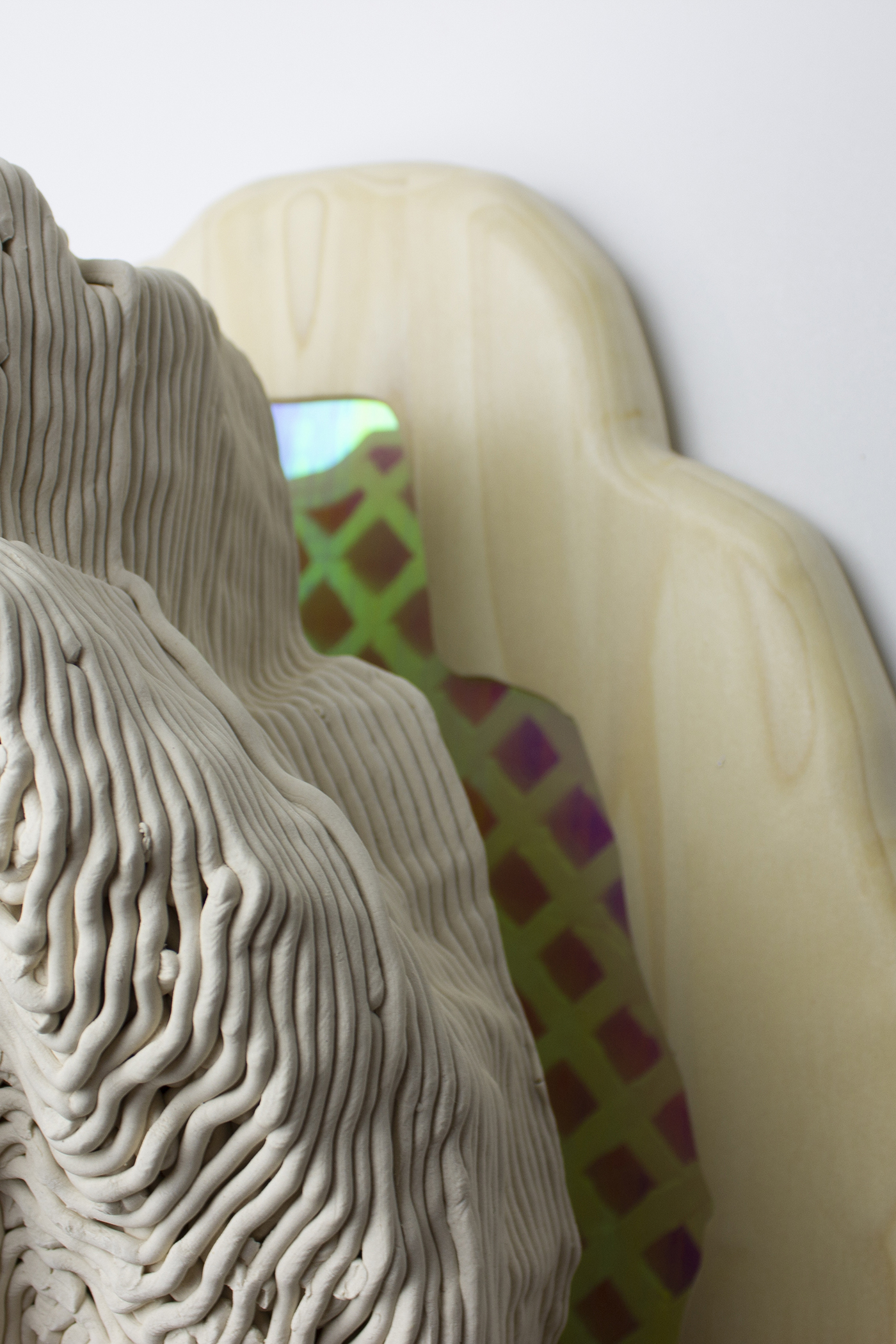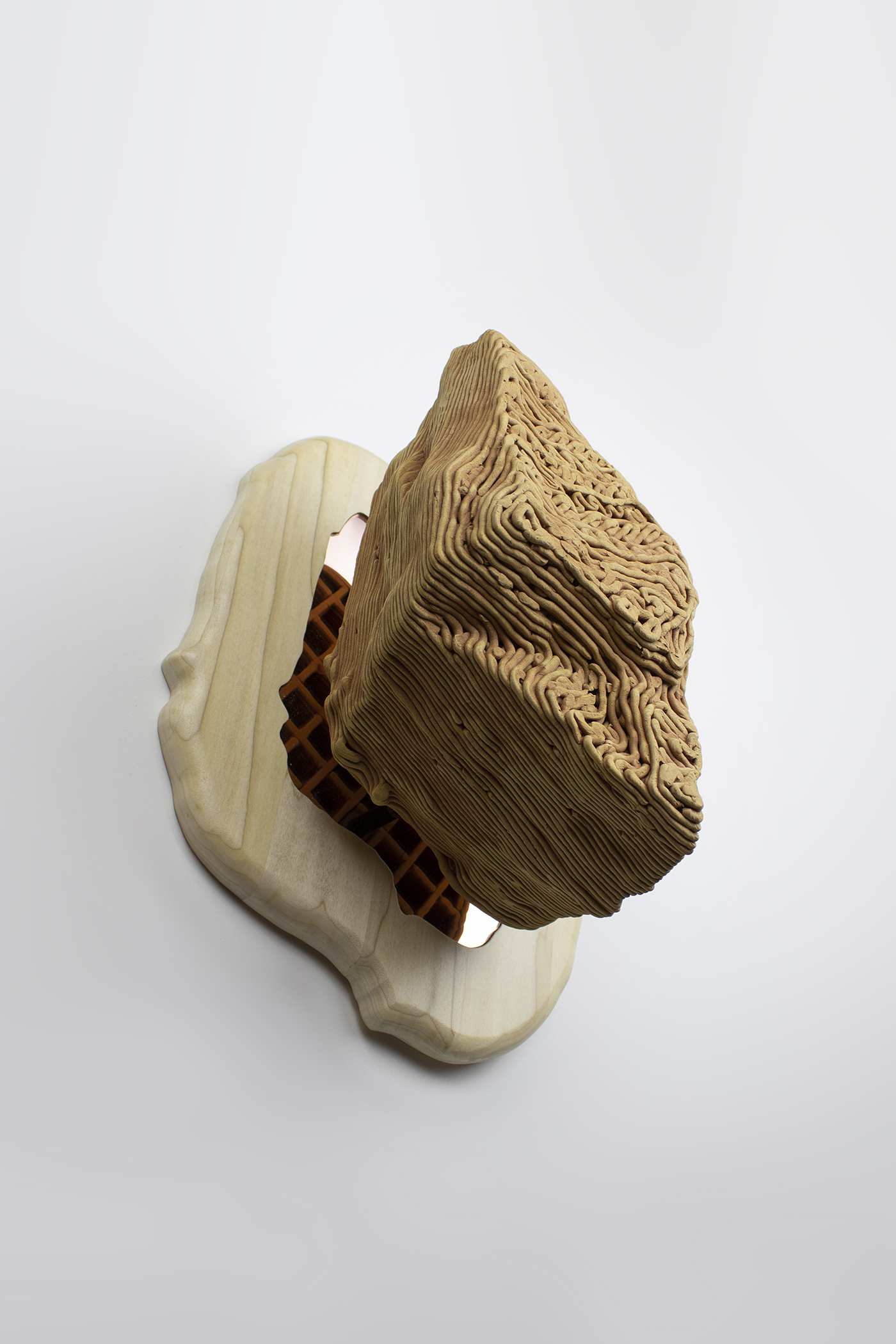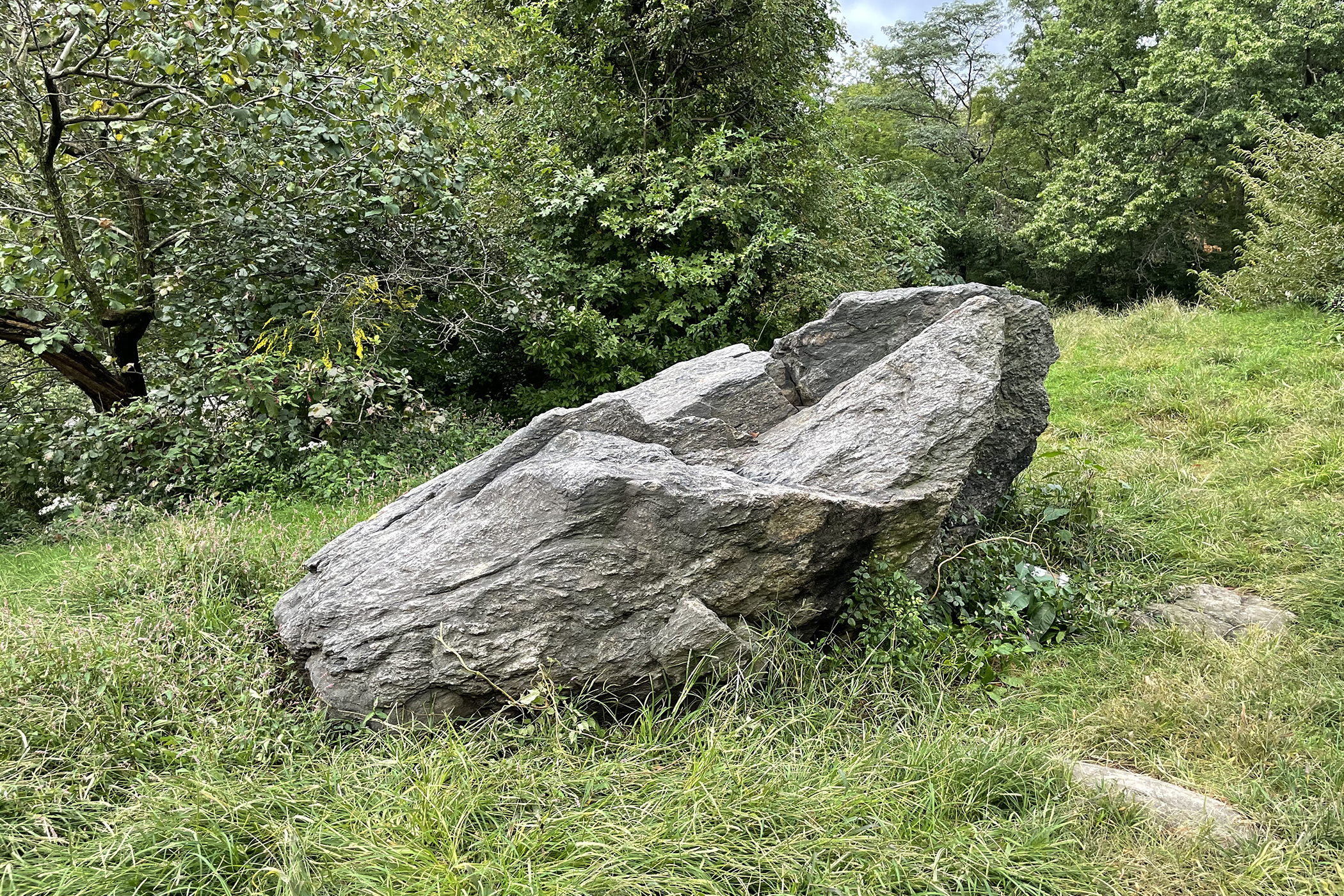Location Rocks
A scan becomes a skin of data points in the computer, perhaps losing definition and material information while entering a simulated world with no gravity, up or down. When translating the digital into clay, the physical realities of the material become apparent. Ridges and support structures printed within an object reveal something about our immediate means of translating the digital to the physical. These are the digital artifacts of this age. This space is of interest, both being a loss of fidelity and a simultaneous spawn of form, it exists at the limen of loss and creation.
Rocks reveal their own history. These works are from Central Park bedrock in New York City. The textures and orientation of the rocks within the park reveal to us which way the glaciers were moving during the Wisconsin Glacial Episode. This bedrock in particular sits within an entirely fabricated environment, surrounded by other rocks likely moved by humans, not glaciers. These rocks have seen many lives already, and in scanning them, I am able to transport them once again. Beginning as a shell of itself on my monitor, a 3 dimensional representation viewed on a 2 dimensional screen. It no longer is a massive immovable object, it has no volume, no material, and the ground it sits on becomes an unknown void. When printed, the gridded latticework fills that void in order to hold the form. The rock now hovers above a reflection of itself, revealing a hint of its digital journey, evoking ideas of other worlds entered through looking glasses and wardrobes. This reflection, or perhaps self reflection of the rock, allows us to view those generative artifacts, yet again on a 2 dimensional plane.
Rocks reveal their own history. These works are from Central Park bedrock in New York City. The textures and orientation of the rocks within the park reveal to us which way the glaciers were moving during the Wisconsin Glacial Episode. This bedrock in particular sits within an entirely fabricated environment, surrounded by other rocks likely moved by humans, not glaciers. These rocks have seen many lives already, and in scanning them, I am able to transport them once again. Beginning as a shell of itself on my monitor, a 3 dimensional representation viewed on a 2 dimensional screen. It no longer is a massive immovable object, it has no volume, no material, and the ground it sits on becomes an unknown void. When printed, the gridded latticework fills that void in order to hold the form. The rock now hovers above a reflection of itself, revealing a hint of its digital journey, evoking ideas of other worlds entered through looking glasses and wardrobes. This reflection, or perhaps self reflection of the rock, allows us to view those generative artifacts, yet again on a 2 dimensional plane.







